Foundation season 2's world was made from Spanish churches and waffle eggs
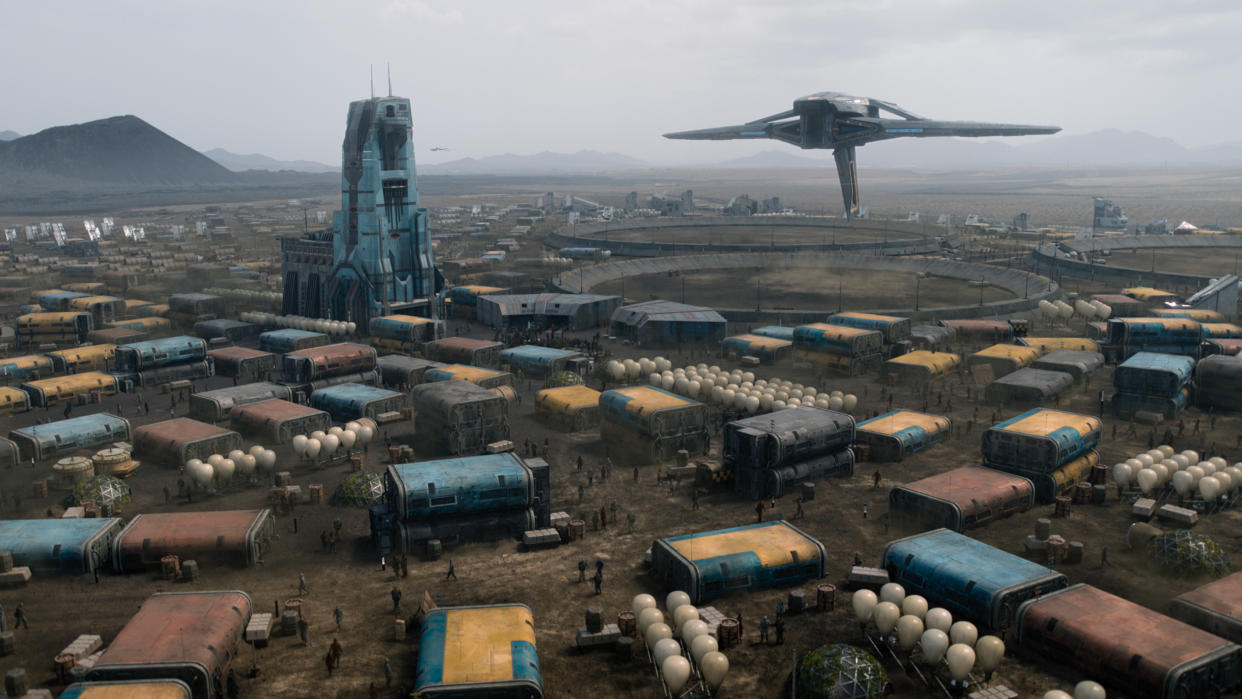
- Oops!Something went wrong.Please try again later.
One of the most exciting new sci-fi shows of recent years has wrapped up its second season, with Apple TV Plus airing the final episode of Foundation season 2 on Friday, September 15. This ten-episode run introduces us to enough new planets, wild space crafts and sci-fi concepts to cement it as a new classic.
Read more on Foundation season 2
Dimitri Leonidas on Hober Mallow
Ben Daniels on Bel Rios
Foundation season 2 ending explained
How to watch Foundation season 2
Foundation is based on the classic series of short stories and novels from beloved sci-fi author Isaac Asimov. It tells the story of the decline and fall of a galactic Empire, while a group of exiles known as Foundation develop the theory of psychohistory which uses mathematics to predict the future of the universe.
This second season of Foundation takes place over a century after the initial one, and so there are new and returning star ships, planets and characters for all fans of science fiction to geek out over. So in order to understand better the world of the show, What to Watch spoke to its Visual Effects Supervisor, Chris MacLean.
MacLean's career includes working as the visual supervisor on Crimson Peak, Godless, American Gods and Pompeii, with his team netting awards and nominations for work on this latter movie as well as the first season of Foundation.
Loaves of bread, waffle eggs and star ships
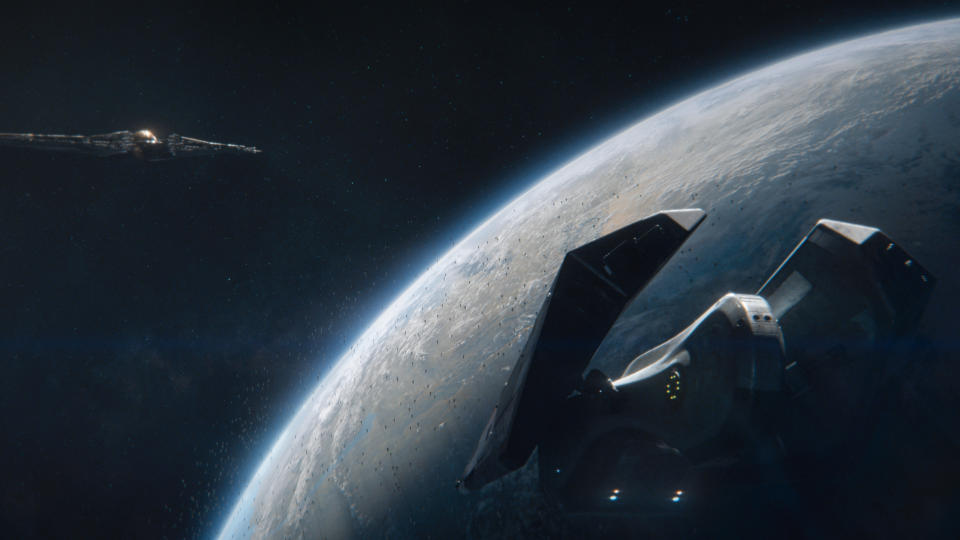
Like all classic space-faring sci-fi works, star ships are commonplace in Foundation, with the second season introducing titans like the Spacers' Home Swarm and Foundation's Whisper Ships alongside returning craft like Salvor Hardin's Beggar's Lament and the Imperial warships.
The Whisper Ships in particular are important for the Foundation's growth, as they're something the faction has created since season 1. MacLean explained how these technological marvels were inspired by the events of the first season, which saw Foundation butt up against two neighbors:
"The Whisper ship is actually specifically designed based on all the technology from Foundation, Thespis and Anacreon, coming together as one unit under Foundation and on Terminus.
"If you look at the design of the ship, it looks like Thespin Lancers from season one. And then when it's in its jump mode, or when the wings are closed on top, it looks like an Anacreon Corvette."
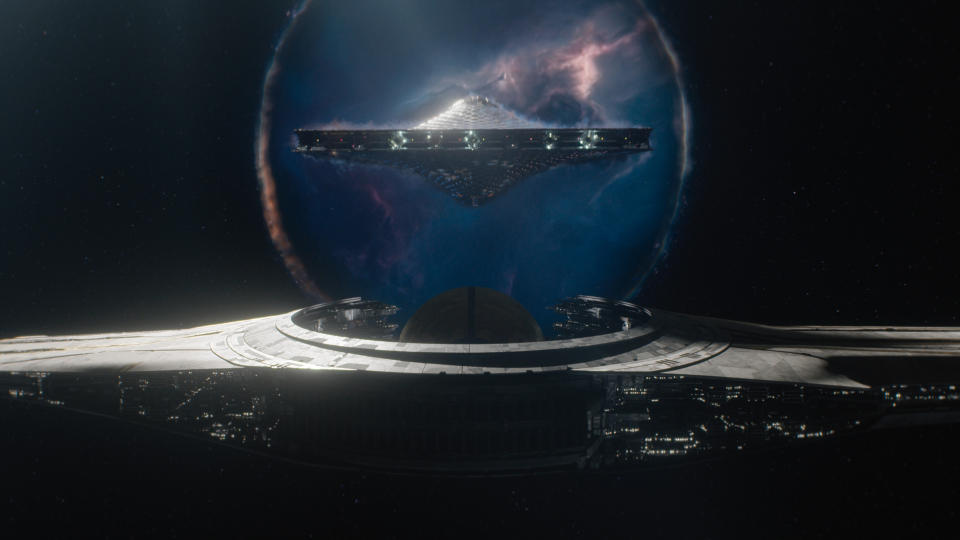
Another grand new ship is the humungous Home Swarm, which the genetically modified Spacers use as an extraterrestrial home, and MacLean explained the thought process in creating this surreal ark:
"That came about in needing a ship that the whole civilization of the spacers could live on. It needed to be massive and it needed to feel otherworldly and kind of odd, because the Spacers have been augmenting themselves and augmenting the ship for over 300 years."
It needed to be massive and it needed to feel otherworldly and kind of odd
Another way MacLean described the ship was as a "waffle egg" — in fact, Foundation's visual effects team gives tongue-in-cheek food-based names to many of the show's ships, with the Beggar's Lament being labeled the "bread loaf". This (presumably) isn't because the team are just all peckish, but because the process of creating a ship begins with simple shapes.
"The concept artists work with Rory [Cheyne, production designer] to hash out the silhouettes of the ships, and then when we talk about the mechanics of them, how to make them fly, how they're supposed to work, that sort of thing." So next time your mind is wandering over breakfast, maybe try to wonder what kind of star ship your bagel would make!
All the stars (and planets) in the sky
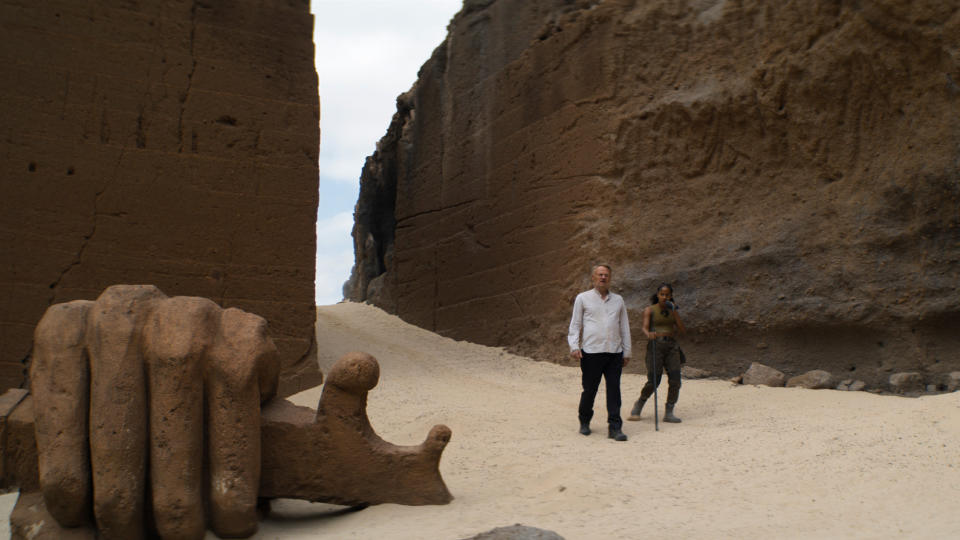
Another staple of great sci-fi is the planets that our characters visit, and Foundation's second season introduces us to loads, like the fallen mining colony of Oona's World, the homeworld of the Mentalics called Ignis and the frontier land of Siwenna. Plus, we see what places like Trantor and Terminus look like after a hundred years of change.
Some of these places come from Asimov's stories — Siwenna is important in the first and second Foundation books — but others are created for the show. And so MacLean explained to us how the team balanced authenticity to the books with the need to create something new:
"When we do something new, it's usually for David [Goyer, showrunner] specifically for the story. And if we do change anything, based on the explanation of the planets that Asimov laid out for us, we usually look at what David has written for that planet."
A lot of [the look] actually came from the art of 1970s sci-fi covers
For the visual look of the entire show, the team looked at a lot of Golden Age art: "A lot of it actually came from the art of 1970s sci-fi covers and things like that. People like John Berkey, there are a bunch of artists and we were heavily influenced by early sci-fi cover artists".
The act of creating planets for Foundation seems like a huge collaborative effort, with many teams chipping in: "The writers usually come up with some form of description of the planets, and Rory has his concept artists work on planet views of that. And then, once we did our locations scout, we had a better idea of how that was all going to fit together."
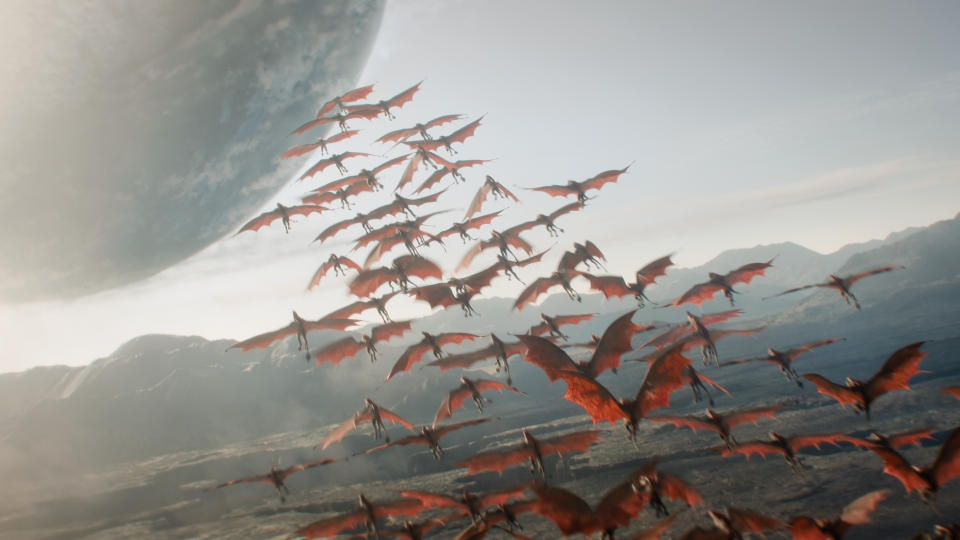
Oona's World was shot at Fuerteventura in Spain's Canary Islands, and the team had to use the location they were given: "so we had to extend the desert. It's all about the location that we have to tell the story, but besides the sci-fi characteristics of that planet, we have to integrate it into the environment."
This location, featured in episode 3, is impressive in how its environment, with ruins and tumbling statues, conveys the fall of the Empire without words. And that isn't the only example of environmental storytelling in Foundation; it's actually something the team makes a point about. MacLean gave us an example:
"We write little notes about what's going on behind the scenes. If you look at Siwenna, there were a tonne of earth-bound creatures, or creatures that had been seeded by Empire when they had gotten there. You see lizards and camels and things like that. And that isn't necessarily out of convenience, part of what Empire did was go out into the galaxy and drop all of these animals off."
As well as planets, we see civilizations: Trantor's changed design reflects the decline of the empire over a century, but mirroring that is Terminus, with Foundation having grown over the course of a hundred years. And that required some work from MacLean and his team:
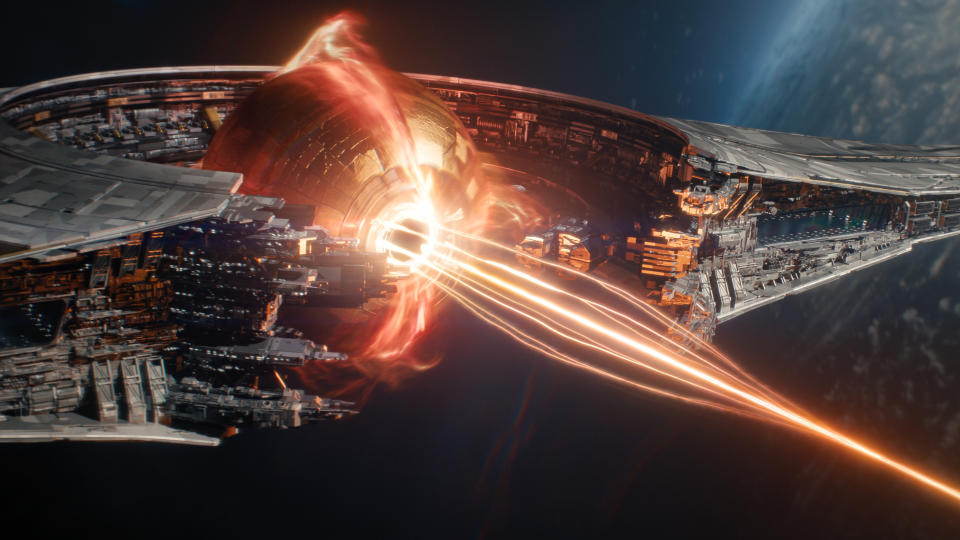
"We had the same footprint [for the main Foundation settlement] that we had in season one, but we needed to expand that digitally, which we did by adding the church itself, and then we added some new architecture that was styled after Thespin and Anacreon
"We also use interior spaces to describe a lot of the new areas and trends in Terminus, like Sermak's Office or the Church of Seldon. We added the spaceport, which was almost all a set extension, save for a door that we were given by art department. We wanted to show progress, but we didn't want to give the audience this new place that they had to figure out where they were."
Places, spaces and scary faces
As well as planets, Foundation season 2 puts us in many surreal or imagined spaces, including The Vault on Terminus, the inside of the Prime Radiant and Mentalic-induced flashbacks and dreams. And while most movies and TV shows would do this on a green screen, Foundation was a bit different.
We could actually build the world around [the actors], as opposed to having them interact with the world
"For most of what we've done for the Prime Radiant and in the vault, we found a location or built a set. For example, Hari's office was a church in Tenerife. Rory also built a space called the zen space, and an example of that is where Salvor talks to Harry in episode eight. He also built a mirror tunnel, which we call the Toblerone [there are those foods again!] which had LED strips in it, when Hari was learning that he was inside of the Prime Radiant.
"We relied on the DP [director of photography] and camera operator to design these shots, and we could actually build the world around [the actors], as opposed to having them interact with the world. We were developing these spaces right up until the shoot days, just because it was such a weird concept to come up with."
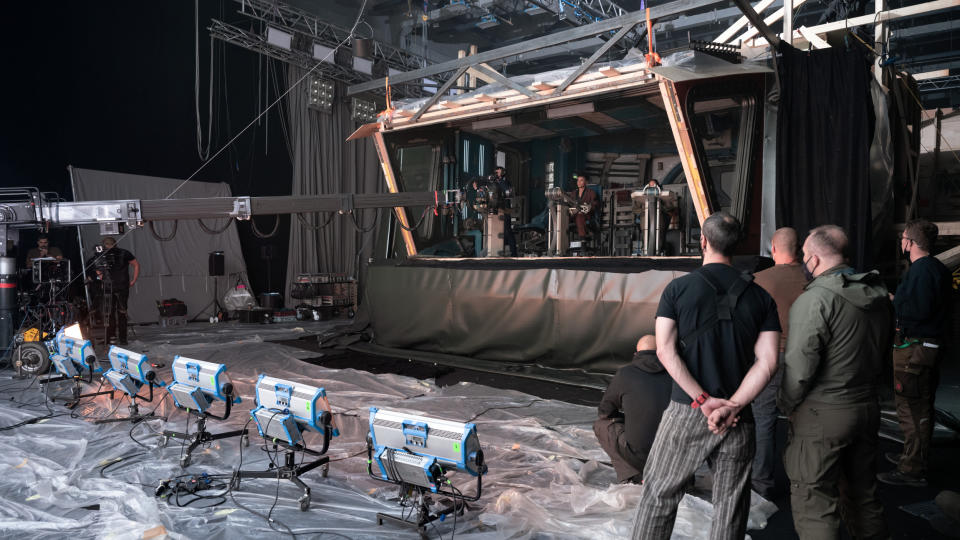
One particular location that features a lot in both seasons of Foundation is the Mural of Souls on Trantor, a giant artwork of moving paint that charts the history of Empire and is kept up by Brother Dusk. And as it so happens, this tapestry is all a physical creation.
"A lot of times Visual Effects gets left holding the bag for things like this, where someone writes something and they put up a blue screen, and we just have to come up with whatever we want to put that. Whereas, Rory and I have a really good relationship. So we spend a lot of time figuring out what we can do practically, and how far we can push the practical application of what our department can give us. It ends up looking a lot more realistic when we do it that way, as opposed to leaving it to the visual effects artists."
For the Mural itself, this practical tendency takes some organization: "Rory will reskin the wall in between days. We'll shoot on the Mural of Souls, and we'll go into something else. And we'll come back after they've changed the mural, or if we don't have time, we'll take the artwork that Rory develops digitally and replace it behind the actors. And then once we get close enough to it, where we actually see the active Chroma effect, then we take the mural over and add our moving grain effect that we see quite a bit."
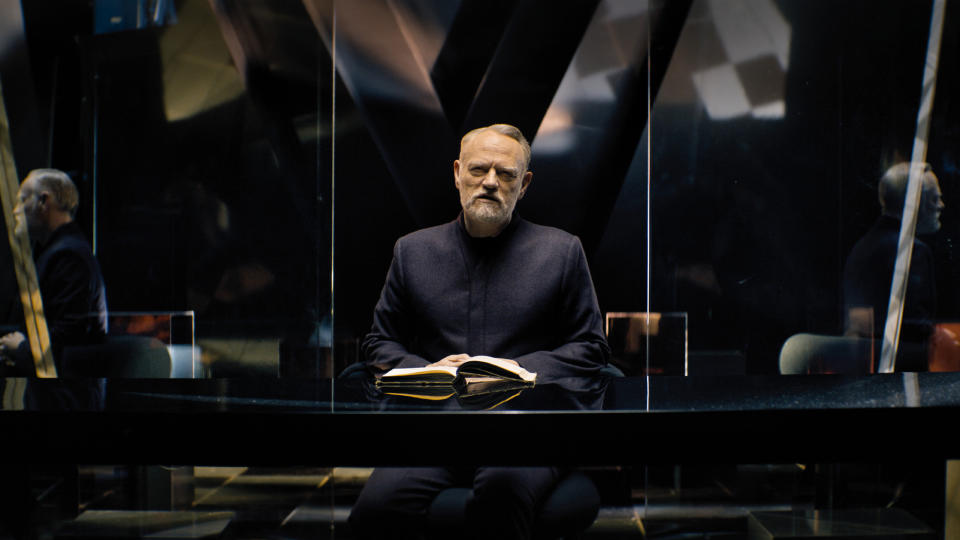
Another important visual in Foundation season 2 is The Mule, the future antagonist who could threaten Foundation. And again, this was a joint effort to create this terrifying figure: "David had a very specific look that he wanted to have. Jane [Petrie, Costume Designer] designed the costume for Mikael [Persbrandt, The Mule] and worked on how the goggles would work. We wanted some physical representation of his Mentalic ability, so we made his eyes glow. And then in terms of him concentrating his telekinetic power [...] he can focus his energy into what we call his gauntlet, which is what we see shooting Gaal in the flashback. And that was a design based off of a comic book reference that David gave us."
This costume also gives us a glimpse into the abilities of The Mule, which could set up a potential third season of the show: "If you look at most of the Mentalic powers, it's the power of suggestion. So they're actually telling you to move as opposed to moving you; there's no Jedi pushes or anything like that, you're actually moving yourself. Whereas the Mule is special in the way that he can telekinetically focus his energy."
The Mule sounds like a big threat to Foundation and the Mentalics, and the last scene of Foundation season 2 gives us a big reason to fear him. At the time of writing no third season of the show has been confirmed, but the story sets up more, and we can't wait to see what new ships, planets and concepts MacLean and his team create in this captivating sci-fi galaxy.

